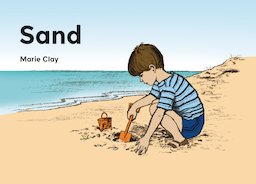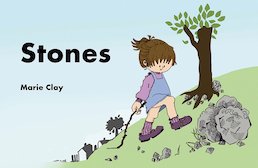Phonological Awareness
What is it?
Phonological awareness is the ability to understand that words have a sound structure, and that there are differing levels of structure, which are often depicted in a hierarchical manner (Gillon, 2004).
Before children begin learning phoneme and grapheme correspondences, they need to develop phonological awareness and be working and playing in environments where speaking and listening is central. It is at this stage they begin to increase their knowledge of words through dialogue; learn to enjoy language through rhythm, rhyme, alliteration and song; discriminate environmental, instrumental and spoken sounds; begin to blend and segment words orally.
A good phonics programme will suggest activities to develop all these aspects. One that begins solely with the recognition of phoneme grapheme correspondences is missing the vital foundations for success.
Phonological awareness is different to both phonics, and phonemic awareness. The key elements of phonological awareness include, but are not limited to:
- Hearing initial sounds in a word
- Hearing a difference between different sounds
- The ability to discriminate between syllables, to count and identify sounds
- They are able to spot whether words rhyme or not
- Hearing that a spoken sentence is made from individual distinguishable sounds in a particular order
What does the research show?
The ability to hear and manipulate phonemes plays a causal role in the acquisition of beginning reading skills (Smith, Simmons, & Kame’enui, 1998)
The effects of training phonological awareness and learning to read are mutually supportive. “Reading and phonemic awareness are mutually reinforcing: Phonemic awareness is necessary for reading, and reading, in turn, improves phonemic awareness still further.” (Shaywitz, 2003)
“Phonological awareness and alphabet knowledge are two of the strongest predictors of reading acquisition” The Effects of a Phonological Awareness and Alphabet Knowledge Intervention on Four Year Old Kindergarten Children, Rachmani, 2011
Preliterate measures of phonological awareness predict early reading and spelling skills more accurately than any other single variable including intelligence scores, age and socio-economic status (e.g. Bradley and Bryant 1978, 1985, Shore et al. 1984, Tunmer and Nesdale 1985, Mann et al. 1987, Juel 1988). July 1999, International Journal of Language & Communication Disorders
How Scholastic can help
Understanding and resourcing reading in your school can be complicated. We’re here to help with reliable, trusted advice on the best resources for Key Stage 1 and Key Stage 2.
Marie Clay
Marie Clay is the most trusted guidance for teachers managing early literacy including Reading Recovery.
For three decades Marie M. Clay has been acknowledged as a world leader in research on literacy learning. This collection provides essential support for early literacy intervention, including vital professional development for training and specialist teachers, as well as trustworthy resources to aid with the delivery of the PM reading programme and more – all to help put reading at the heart of your school.
-
 Marie Clay: An Observation Survey of Early Literacy Achievement (4th Edition)
Marie Clay: An Observation Survey of Early Literacy Achievement (4th Edition)
- eur prices
- Offer price: €49.70
- Rewards/RRP: €66.14
-
 Marie Clay: Literacy Lessons Designed for Individuals - Updated Edition
Marie Clay: Literacy Lessons Designed for Individuals - Updated Edition
- eur prices
- Offer price: €42.00
- Rewards/RRP: €55.85
-
 Marie Clay: Concepts About Print: Follow Me Moon
Marie Clay: Concepts About Print: Follow Me Moon
- eur prices
- Offer price: €9.90
- Rewards/RRP: €13.22
-
 Marie Clay: Concepts About Print: No Shoes
Marie Clay: Concepts About Print: No Shoes
- eur prices
- Offer price: €9.90
- Rewards/RRP: €13.22
-
 Marie Clay: Concepts About Print: Sand
Marie Clay: Concepts About Print: Sand
- eur prices
- Offer price: €9.90
- Rewards/RRP: €13.22
-
 Marie Clay: Concepts About Print: Stones
Marie Clay: Concepts About Print: Stones
- eur prices
- Offer price: €9.90
- Rewards/RRP: €13.22
</div class=“highlighted-content”>






